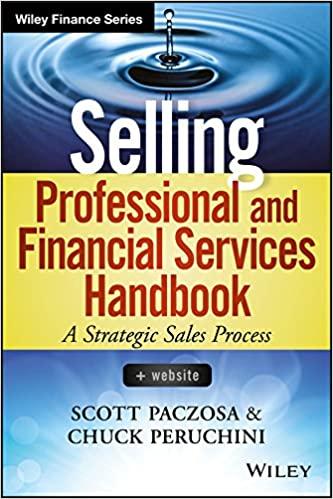Question
Schumann Shoe Manufacturer is considering whether or not to refund a $70 million, 10% coupon, 30-year bond issue that was sold 8 years ago. It
| Schumann Shoe Manufacturer is considering whether or not to refund a $70 million, 10% coupon, 30-year bond issue that was sold 8 years ago. It is amortizing $4.5 million of flotation costs on the 10% bonds over the issue's 30-year life. Schumann's investment bankers have indicated that the company could sell a new 22-year issue at an interest rate of 8 percent in today's market. Neither they nor Schumann's management anticipate that interest rates will fall below 6 percent any time soon, but there is a chance that interest rates will increase. | |||||||||||
| A call premium of 10 percent would be required to retire the old bonds, and flotation costs on the new issue would amount to $5 million. Schumann's marginal federal-plus-state tax rate is 40 percent. The new bonds would be issued 1 month before the old bonds are called, with the proceeds being invested in short-term government securities returning 5 percent annually during the interim period. | |||||||||||
| Current bond issue data | |||||||||||
| Par value | $ 70,000,000 |
| |||||||||
| Coupon rate | 10% | ||||||||||
| Original maturity | 30 | ||||||||||
| Remaining maturity | 22 | ||||||||||
| Original flotation costs | $ 4,500,000 | ||||||||||
| Call premium | 10% | ||||||||||
| Tax rate | 40% | ||||||||||
|
Refunding data | |||||||||||
| Coupon rate | 8.0000% | ||||||||||
| Maturity | 22 | ||||||||||
| Flotation costs | $ 5,000,000 | ||||||||||
| Time between issuing new bonds and calling old bonds (months) | 1 | ||||||||||
| Rate earned on proceeds of new bonds before calling old bonds (annual) |
5% | ||||||||||
| a. Perform a complete bond refunding analysis. What is the bond refunding's NPV? | ||||||||||
| Initial investment outlay to refund old issue: | ||||||||||
| Call premium on old issue = |
| |||||||||
| After-tax call premium = |
| |||||||||
| New flotation cost = |
| |||||||||
| Old flotation costs already expensed = |
| |||||||||
| Remaining flotation costs to expense = |
| |||||||||
| Tax savings from old flotation costs = |
| You get to expense the remaining flotation costs | ||||||||
| Additional interest on old issue after tax = |
| This is interest paid on the old bond issue between when the new bonds are issued and the old bonds are retired | ||||||||
| Interest earned on investment in T-bonds after tax = |
| This is interest earned on the proceeds from the new bonds before they are used to pay off the old bonds. | ||||||||
| Total investment outlay = |
| |||||||||
| Annual Flotation Cost Tax Effects: | ||||||||||
| Annual tax savings on new flotation = |
| |||||||||
| Tax savings lost on old flotation = |
| |||||||||
| Total amortization tax effects = |
| |||||||||
| Annual interest savings due to refunding: | ||||||||||
| Annual after tax interest on old bond = |
| |||||||||
| Annual after tax interest on new bond = |
| |||||||||
| Net after tax interest savings = |
| |||||||||
| Annual cash flows = |
| |||||||||
| After-tax cost of new debt = |
| |||||||||
| NPV of refunding decision = |
| |||||||||
| b. At what interest rate on the new debt is the NPV of the refunding no longer positive? | |||||||||||
| "Break-even" interest rate = |
| ||||||||||
Step by Step Solution
There are 3 Steps involved in it
Step: 1

Get Instant Access to Expert-Tailored Solutions
See step-by-step solutions with expert insights and AI powered tools for academic success
Step: 2

Step: 3

Ace Your Homework with AI
Get the answers you need in no time with our AI-driven, step-by-step assistance
Get Started


